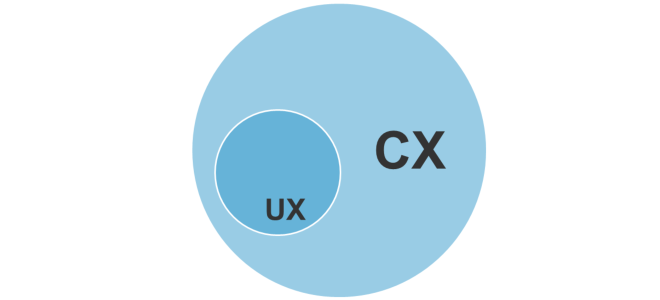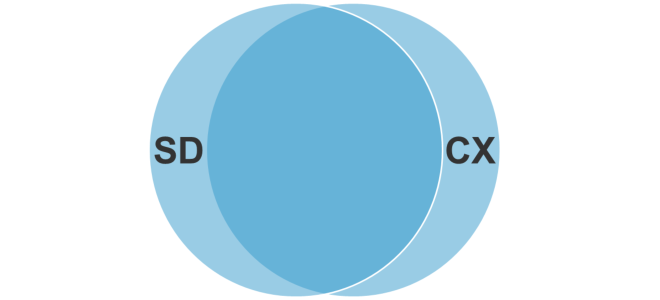How Does Service Design Relate To CX And UX?
Service design is critical to customer experience (CX). (If you’re not sure why, please check out my post from earlier this week called “Service Design: The Most Important Design Discipline You’ve Never Heard Of,” and then come back and continue reading.) But what exactly is the relationship between the service design and CX? And how does the field of user experience (UX) factor into this picture?
User experience primarily focuses on the design and development of digital interactions. Today, this typically means websites, mobile phones, and tablets, but UX can also include touchpoints like kiosks, desktop software, or interactive voice response systems.
Customer experience focuses on the design, implementation, and management of interactions that happen across the entire customer journey. This includes the interactions that take place as customers discover, evaluate, buy, access, use, get support, reengage, and leave.
As the image below shows, I believe that all UX work is a subset of CX work. Customer-facing digital touchpoints are by definition part of the CX, and employee- or partner-facing digital touchpoints either directly or indirectly affect the customer experience in some way.

Service design, like customer experience, focuses on the design and implementation of interactions that happen across the entire customer journey. Service designers also design the behind-the-scenes activities that enable those experiences to be delivered as planned.
So why, as the next image shows, doesn’t service design completely overlap with CX? First, there are components of customer experience management (things like measurement and governance) that fall outside the scope of service design. That’s not to say that you can’t incorporate aspects of measurement and governance into a service design project —but most companies don’t typically approach these ongoing management activities today with a service design mindset. Second, there’s a significant number of service designers who focus on improving the quality of life for people in need through social innovation — and while noble, this work doesn’t fit into today’s commonly held definition of CX.
Why doesn’t service design completely overlap with UX? There’s a good deal of UX work that goes into digital marketing touchpoints — think banner ads, landing pages, and microsites. There’s no reason why the worlds of service design and digital marketing couldn’t overlap, but that’s just not the reality in today’s business world.

It’s important to understand that we’re standing on shifting sands as far as these disciplines go, and the pictures above may not be accurate in a few years. In fact, my vision for the future is that the field of UX will be subsumed by the field of service design as more UX practitioners take a broader view of how digital touchpoints fit into the overall customer journey. I also hope that the overlap between CX and service design will grow as companies learn to integrate service design practices into their ongoing CX management activities.
